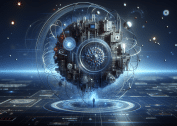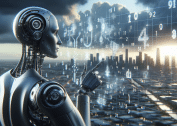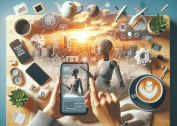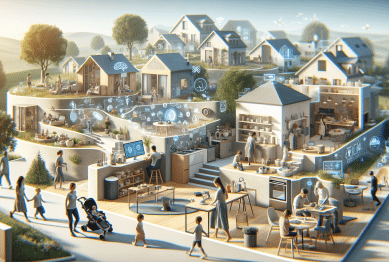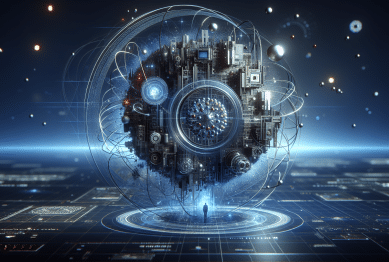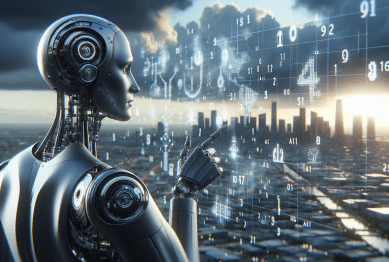Artificial intelligence is not just for tech giants anymore. This article reveals the fascinating and sometimes unexpected ways AI touches daily routines, from smarter homes to health tracking and personal assistants. Discover how these advanced tools shape experiences you may take for granted.
AI in Your Home: More Than Just Smart Speakers
Stepping into a home equipped with artificial intelligence feels different. Smart appliances now do more than just respond to standard commands; many can anticipate preferred settings by learning from user behavior. For instance, AI-powered thermostats adapt to temperature patterns, helping manage energy usage efficiently and potentially lowering utility bills over time. In kitchen appliances, some refrigerators use embedded sensors and machine learning algorithms to monitor food freshness, alerting when supplies run low or items need to be consumed soon. These enhancements aren’t just futuristic concepts—they’re available through popular brands and platforms that aim to make daily living more intuitive and connected.
The integration of AI into entertainment systems has transformed how people interact with their favorite media. Streaming platforms like Netflix and Spotify use machine learning to suggest content tailored to individual tastes, refining recommendations based on viewing or listening habits. Such personalization not only enriches enjoyment but also streamlines decision-making by surfacing relevant options. AI systems underpinning these platforms consider countless factors, including watch history and even pause/rewind behavior, to refine their suggestions. Ultimately, this reflects the depth at which artificial intelligence has integrated itself into what once were routine choices.
Home security is another area where artificial intelligence shines. AI-powered cameras and alarm systems can distinguish between familiar faces and potential threats, reducing false alerts and increasing peace of mind. These systems analyze visual and audio input in real-time, notifying owners only when relevant activity is detected. Some solutions offer remote control and automatic emergency contact features, providing enhanced safety even when far from home. All these developments highlight how artificial intelligence quietly but significantly upgrades daily comfort and security in modern homes.
AI Personal Assistants: Making Life Smoother
Personal assistants like Siri, Alexa, and Google Assistant have become almost ubiquitous in modern technology landscapes. Voice recognition and natural language processing allow these tools to understand complex queries and carry out diverse commands, from setting reminders to controlling an entire home’s lighting system. Their usefulness does not end with simple requests—over time, they learn preferences and offer increasingly relevant responses. This continuous adaptation is driven by advanced algorithms that analyze usage patterns, making everyday tasks easier without conscious effort.
Scheduling and productivity benefit dramatically from the adoption of AI personal assistants. Calendar management becomes more intuitive as these tools remind users about upcoming events and suggest optimal times for meetings or breaks, improving overall workflow. They can even read emails, summarize important messages, and offer context-aware suggestions. This seamless integration saves time and reduces information overload, enabling focus on high-priority tasks. Such efficiencies are essential in both personal and professional contexts, confirming the enduring utility of AI-driven assistance.
Another rapidly growing feature involves AI translating services. Virtual assistants can translate phrases across many languages instantly, facilitating travel or cross-cultural communication. These systems use machine learning models trained on vast linguistic datasets, producing accurate and natural-sounding results. By breaking down language barriers, AI helps foster connections and enables smoother interactions in a globalized society. Importantly, this technology continues evolving, offering even greater precision as it learns from real-world feedback and usage.
How AI Is Revolutionizing Healthcare Routines
Artificial intelligence is improving healthcare in tangible ways. Smart wearable devices, such as fitness trackers and heart rate monitors, use AI to interpret biometric data, offering constructive feedback about sleep, exercise, and overall wellness. Many devices now alert users to abnormal heart rhythms or patterns, prompting timely medical attention. Algorithms learn individual baselines and can detect subtle deviations, making AI an unseen guardian of daily wellness routines. These insights empower people to take more proactive control of their health, supporting preventive care initiatives.
In clinics, AI applications assist physicians and medical staff in reviewing complex diagnostic results. Imaging AI can highlight atypical regions in scans, helping radiologists focus on possible concerns. This doesn’t replace human expertise but acts as a supplemental aid, potentially catching issues earlier than traditional methods alone. Some systems support workflow by prioritizing urgent cases based on risk factors flagged in medical records. Such advances contribute to more efficient, accurate, and compassionate care by reducing error potential and streamlining processes.
Beyond diagnostics, conversational AI is now being deployed to offer mental health support. Chatbots and digital avatars provide a confidential, always-available resource for individuals seeking help with stress, anxiety, or other concerns. AI-driven mental health support can monitor keyword patterns in chat, flagging when sessions indicate potential crisis. While this does not replace human counseling, it fills gaps where immediate care might not be available. As these technologies grow more sophisticated, their role in augmenting personalized healthcare is only set to expand.
Transportation and The Smart Mobility Revolution
AI-driven innovation is changing how individuals move about their cities. Navigation apps use real-time traffic data, historical movement trends, and AI-based forecasting to suggest optimal routes. By analyzing vast amounts of data, these platforms help avoid congestion and reduce travel time. Ride-sharing networks also depend on artificial intelligence to match drivers with passengers efficiently, taking into account variables like distance, traffic, and demand. These systems are designed to learn from daily activity, becoming more accurate with ongoing usage.
Self-driving technologies are another frontier in the AI-driven mobility revolution. Autonomous vehicles rely on an ecosystem of cameras, sensors, and AI algorithms to interpret surroundings, make split-second decisions, and ensure passenger safety. Though fully autonomous vehicles are still emerging, many existing cars now boast partial automation features—such as automatic braking, lane assist, and adaptive cruise control—powered by machine learning. These technologies offer a glimpse into the future of safer, more reliable transportation.
Public transit networks are harnessing AI to improve efficiency and reliability. Urban planners use predictive algorithms to forecast demand surges, enabling them to adjust schedules in real-time. Smart ticketing systems and automated information displays enhance passenger convenience. These technologies create a more responsive mobility infrastructure while reducing energy consumption and emissions. The result is a smarter, more sustainable way to navigate cities and connect people to the places that matter most.
AI in Education: A Personalized Learning Experience
Education technology is harnessing artificial intelligence to create personalized learning pathways. Adaptive learning platforms analyze student performance, identifying strengths and areas needing improvement. As a result, lesson plans can be tailored to individual pace and style, allowing learners to progress at the rate that suits them best. AI-powered tutors provide real-time feedback, answer questions, and suggest additional resources, all while continuously adapting to student needs.
For educators, AI streamlines administrative processes such as grading and attendance tracking. Automated systems review homework, tests, and essays, providing initial evaluations and flagging assignments that may require detailed teacher attention. This reduces repetitive tasks, freeing up time for more meaningful classroom interactions. Teachers can also access AI-generated insights about class engagement and participation, informing instructional strategies and supporting diverse learning needs.
AI also breaks down barriers to education by facilitating translations and accessibility features. Real-time closed captioning, content summarization, and adaptive technologies help remove obstacles for students with different learning styles or abilities. Education becomes more inclusive, reaching a broader audience. This shift toward personalized, accessible learning is reshaping how knowledge is shared, helping more people thrive in increasingly complex digital landscapes.
Ethical Considerations and the Future of Everyday AI
With artificial intelligence taking on a more central role in daily life, ethical considerations are increasingly relevant. Concerns often center on data privacy, algorithmic bias, and the impact on traditional jobs. Users and policymakers alike question how data—especially personal information—is collected, stored, and used. Responsible organizations commit to transparent data practices, robust encryption, and regular audits to safeguard user interests and foster trust in technological advancements.
AI systems must be designed to avoid entrenching bias or unequal treatment. This means developers need to ensure diverse datasets and ongoing oversight to check for unintended consequences. Ethical frameworks and guidelines, developed by global institutions and research communities, help guide responsible development and deployment. Awareness of these challenges drives innovation in fairness, accountability, and explainability, pushing AI toward more ethical outcomes in everyday use.
Looking ahead, artificial intelligence will likely continue to rewrite the script of everyday life, blending invisibly into activities long taken for granted. As machine learning, computer vision, and natural language processing grow more advanced, expect to see AI enabling new possibilities in health, safety, transportation, and education. Public dialogue about ethical use and social value will remain vital in balancing rapid progress with enduring human needs and values.
References
1. U.S. Department of Energy. (n.d.). Artificial Intelligence and Machine Learning. Retrieved from https://www.energy.gov/artificial-intelligence-machine-learning
2. National Institute of Standards and Technology. (n.d.). Artificial Intelligence. Retrieved from https://www.nist.gov/artificial-intelligence
3. Mayo Clinic. (n.d.). Artificial intelligence in health care. Retrieved from https://www.mayoclinic.org/tests-procedures/ai-in-health-care/about/pac-20484818
4. Stanford University. (n.d.). AI Index Report. Retrieved from https://aiindex.stanford.edu/report/
5. Brookings Institution. (n.d.). The ethics of artificial intelligence. Retrieved from https://www.brookings.edu/research/the-ethics-of-artificial-intelligence/
6. Education Technology Solutions. (n.d.). AI in Education. Retrieved from https://www.edutopia.org/article/artificial-intelligence-classroom



